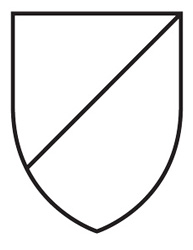Dexter Sinister, (Party) per bend sinister, 2005.
Stuart Bailey: Born 1973 in York, England; lives in New York, New York. David Reinfurt: Born 1971 in Chapel Hill, North Carolina; lives in New York, New York
Opened by David Reinfurt and Stuart Bailey in 2006 as a “Just-in-Time Workshop & Occasional Bookstore” in a Ludlow Street basement in New York, the design and publishing collaborative Dexter Sinister collapses categories, functions, and roles. Joined by Sarah Crowner, Dexter Sinister combines the characteristically distinct identities of designer, producer, publisher, and distributor. They propose a heteroclite counterpart to the dominant one-size-fits-all, Fordist assembly-line style of print production and distribution. In contrast to the juggernaut of contemporary publishing and its economies of scale, the workshop, according to the artists, “involves avoiding waste by working on demand, utilizing local cheap machinery, considering alternate distribution strategies, and collapsing distinctions of editing, design, production, and distribution into one efficient activity.”
Evolving out of a proposal to contribute a print workshop to Manifesta 6—the 2006 biennial in Cyprus that was to take the form of an art school—Dexter Sinister’s gadfly practice is located in specific projects, but also in pedagogy. Prior to the show’s cancellation, in January 2006 they produced the first part of the Manifesta project, an anthology titled Notes for an Art School, comprising essays on the future of the art school by artists, curators, theorists, and educators designed to “rethink the goals and structure of an art school, its ideological contexts” and to “interrogate the appropriateness and validity of existing school models.” Significantly, Dexter Sinister’s practice continues to combine both the local and metaphorical precepts of their Manifesta 6 gambit.
The name and form of Dexter Sinister refer to a heraldic device, or the announcement of something to come: a plain shield with a single diagonal line running from the top right corner to the bottom left edge— in Latin, “dexter” and “sinister,” respectively. Tellingly, the insignia mirrors the heraldic device in the title of Vladimir Nabokov’s 1947 novel, Bend Sinister, which announces the coming of a totalitarian, conformist society that discourages individuality and celebrates the state.
Dexter Sinister’s proposal for the Whitney takes the form of an extended poem titled True Mirror, a composite of excerpts from writings and artworks derived from a variety of artists and authors. Loosely based on ideas of reflecting and shadowing, the manifestations of this abstract proposal remain necessarily open until the Biennial begins. Dexter Sinister will occupy a former colonel’s dressing room at New York’s uptown Armory, from which they will explore various channels of distribution alongside the rest of the show. These activities are prefaced by a typically oblique double motto: “Quality is merely the distribution aspect of Quantity” (or vice versa). TODD ALDEN
Dexter Sinister, (Party) per bend sinister, 2005. Materials variable, dimensions variable
























